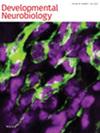Neuroinflammatory Pathways in Autism Spectrum Disorder: Unraveling the Role of Sirtuin 1 in Clinical Samples
Abstract
Despite extensive research, the etiological factors contributing to autism spectrum disorder (ASD) remain incompletely understood, with potential influences ranging from genetic predispositions to environmental factors. Sirtuin 1 (SIRT1), an NAD+-dependent histone deacetylase involved in mitigating oxidative stress and its association with other neurodevelopmental disorders, explores its function in ASD. This study aimed to elucidate the relationship between SIRT1 and inflammatory cytokines, specifically interleukin 6 (IL-6) and tumor necrosis factor alpha (TNF-α), in patients with ASD.
This study enrolled 46 children diagnosed with ASD and 44 typically developing (TD) children aged 36–120 months. Diagnosis of ASD was confirmed using DSM-5 criteria through clinical and observational assessments conducted by three experienced child and adolescent psychiatrists at the outpatient Infant Mental Health unit of Ankara University. The Childhood Autism Rating Scale (CARS) and the Repetitive Behavior Scale-Revised (RBS-R) were used to assess autistic behaviors.
Analysis of serum levels of SIRT1, IL-6, and TNF-α revealed no significant differences between the ASD group and the TD group. Correlation analysis demonstrated a significant positive relationship between SIRT1 levels and IL-6 (r = 0.71, p < 0.001) and TNF-α (r = 0.86, p < 0.001). Additionally, regression phenomena exhibited a moderate negative correlation with IL-6 (r = −0.32, p = 0.02) and TNF-α (r = −0.38, p = 0.008). Age was positively correlated with levels of IL-6, TNF-α, and SIRT1. However, no correlations were found between these parameters and gender.
These findings do not support the hypothesized role of disturbances in the expression of circulating cytokines and SIRT1 as indicators of systemic inflammation in autism. Further longitudinal studies should examine these immune markers in blood samples from large sample sizes.

 求助内容:
求助内容: 应助结果提醒方式:
应助结果提醒方式:


